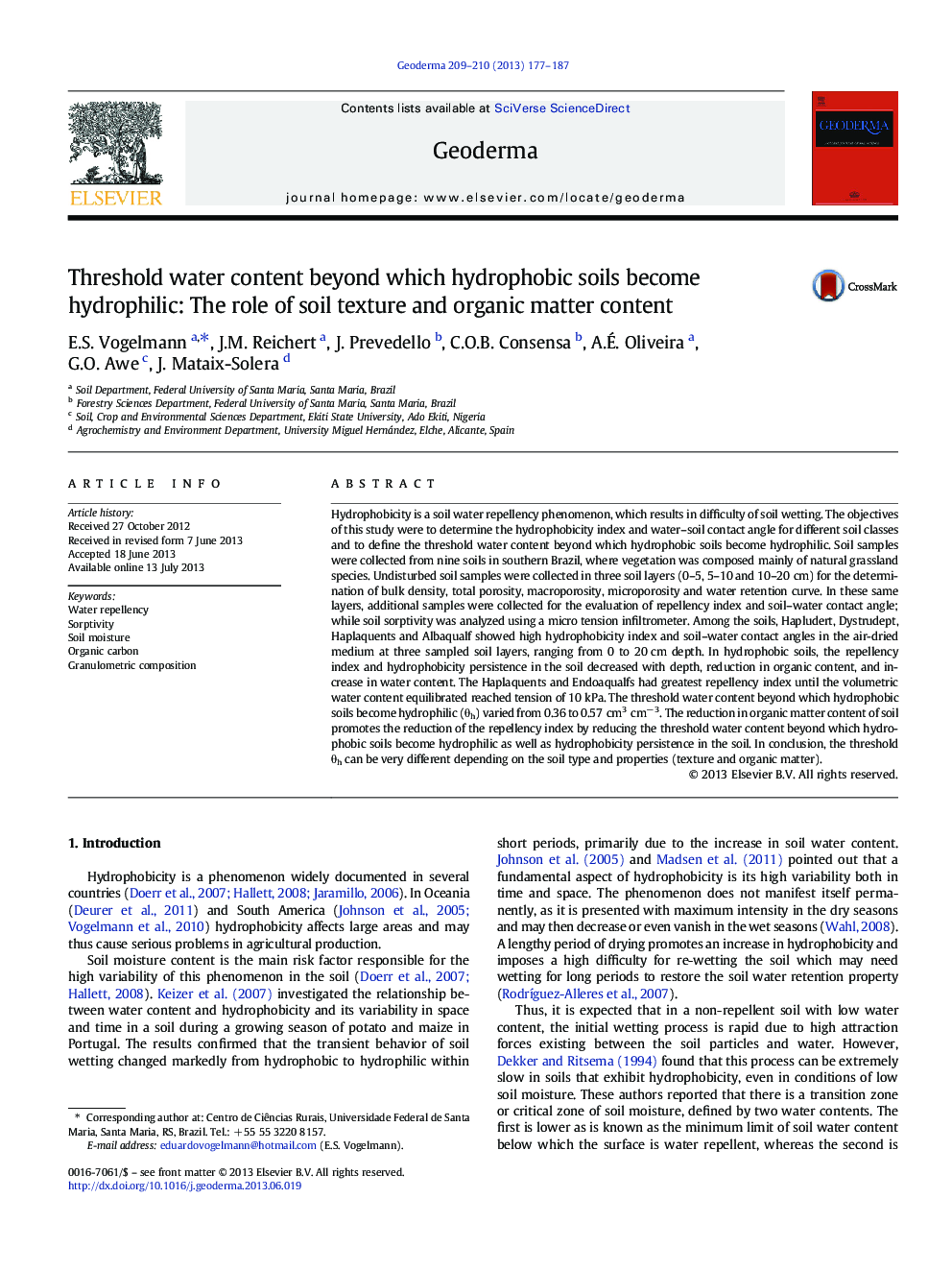| Article ID | Journal | Published Year | Pages | File Type |
|---|---|---|---|---|
| 6409116 | Geoderma | 2013 | 11 Pages |
â¢The hydrophobicity index decreases with the moisture content and depth increase.â¢Reduction in organic matter content promotes the increase of threshold water content.â¢The reduction of the organic matter content increases the hydrophobicity persistence.â¢The threshold water content varies among different soil classes.
Hydrophobicity is a soil water repellency phenomenon, which results in difficulty of soil wetting. The objectives of this study were to determine the hydrophobicity index and water-soil contact angle for different soil classes and to define the threshold water content beyond which hydrophobic soils become hydrophilic. Soil samples were collected from nine soils in southern Brazil, where vegetation was composed mainly of natural grassland species. Undisturbed soil samples were collected in three soil layers (0-5, 5-10 and 10-20 cm) for the determination of bulk density, total porosity, macroporosity, microporosity and water retention curve. In these same layers, additional samples were collected for the evaluation of repellency index and soil-water contact angle; while soil sorptivity was analyzed using a micro tension infiltrometer. Among the soils, Hapludert, Dystrudept, Haplaquents and Albaqualf showed high hydrophobicity index and soil-water contact angles in the air-dried medium at three sampled soil layers, ranging from 0 to 20 cm depth. In hydrophobic soils, the repellency index and hydrophobicity persistence in the soil decreased with depth, reduction in organic content, and increase in water content. The Haplaquents and Endoaqualfs had greatest repellency index until the volumetric water content equilibrated reached tension of 10 kPa. The threshold water content beyond which hydrophobic soils become hydrophilic (θh) varied from 0.36 to 0.57 cm3 cmâ 3. The reduction in organic matter content of soil promotes the reduction of the repellency index by reducing the threshold water content beyond which hydrophobic soils become hydrophilic as well as hydrophobicity persistence in the soil. In conclusion, the threshold θh can be very different depending on the soil type and properties (texture and organic matter).
